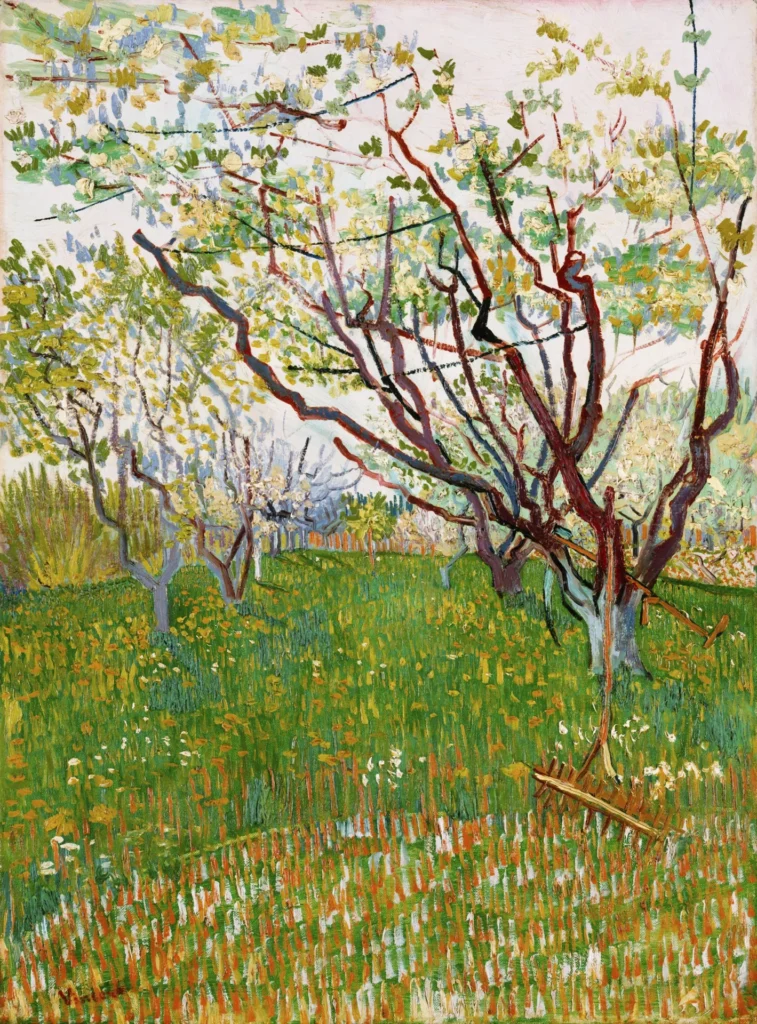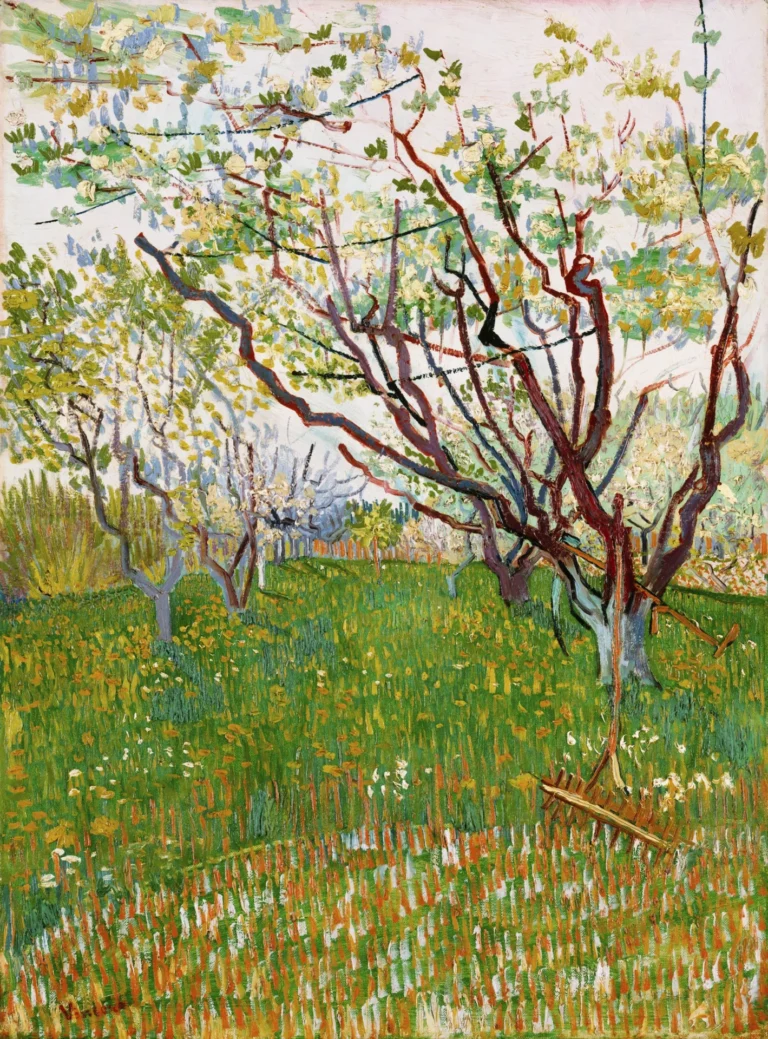The Flowering Orchard (1888)
The Flowering Orchard series by Vincent van Gogh comprises around fourteen paintings created in April 1888, depicting the enchanting fruit blossoms in Arles, France. Noteworthy works include "Orchard in Blossom (Plum Trees)" and "The White Orchard," both featuring trees bursting with life and vibrancy. Van Gogh's unique style—marked by short brush strokes and vivid color contrasts—captures not only the visual beauty of nature but also its deeper symbolism of hope and renewal.
Spring 1888
About the Artwork
This series was born out of Vincent van Gogh's profound appreciation for nature and its transformative beauty, particularly in the spring. After moving to Arles, he found inspiration in the orchards surrounding him, where the vibrant colors of blooming fruit trees mirrored his own emotional awakening. His fascination with Japanese art also influenced his approach, culminating in paintings that combine Impressionistic technique with the bold simplicity and clarity characteristic of Japanese woodblocks. Each artwork in the series reflects Van Gogh’s internal struggles and aspirations—symbols of rebirth captured in the blossoms he so lovingly rendered.
Did You Know
Liked what you see? Add it to your collection.
Enjoyed reading? Share it.
... continued
Series and Location
Van Gogh painted these works in Arles, where he was inspired by the blooming fruit trees in the local orchards. The series includes about fourteen paintings of blossoming fruit trees, such as apricot, peach, plum, and almond trees.
Specific Paintings
Several paintings are notable within this series:
- Orchard in Blossom (Plum Trees): Painted in April 1888, this work is now at the Van Gogh Museum in Amsterdam. It features plum trees and was worked on further by Van Gogh from memory when he was in Saint-Rémy in 1889.
- The White Orchard: Painted in April 1888, this painting depicts poorly maintained plum trees with long branches. It is also at the Van Gogh Museum in Amsterdam.
- Flowering Orchard: Another version, simply titled "Flowering Orchard," is part of the Van Gogh Museum's collection as well. These paintings often feature high vantage points, emphasizing the contrast between the dark tree trunks and the light, blossoming branches.
Influences and Style
These paintings reflect various influences, including Impressionism, Divisionism, and Japanese woodcut art. Van Gogh was particularly drawn to the simplicity and clarity of Japanese woodblocks, which is evident in the composition and use of color in these works. He used short brush strokes and emphasized the play of light, characteristic of Impressionist techniques.
Symbolism and Inspiration
For Van Gogh, flowering trees symbolized rebirth and hope. He was aesthetically and emotionally inspired by these trees, seeing them as a representation of awakening and new life.
Provenance
Many of these paintings were sent to his brother Theo van Gogh in Paris and later passed through various exhibitions and collections before being permanently housed at the Van Gogh Museum in Amsterdam.










